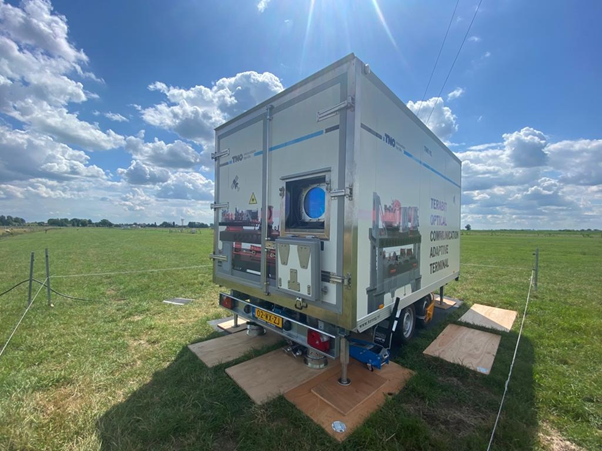A consortium of European industry, led by Dutch firm TNO and backed by the European Space Agency (ESA), has successfully established the world’s first robust optical datalink using real-world conditions in field tests held in the Netherlands.
The tests were carried out as part of the Terabit Optical Communication Adaptive Terminal (TOmCAT)* initiative, an ESA-backed technology development project supported by the Netherlands Space Agency. TOmCAT is part of the ARTES Strategic Programme Line (SPL) ‘Optical & Quantum Communications’, also known as ‘ScyLight’. TOmCAT’s objective is to develop a commercial optical ground station product which will use high data rate laser links to communicate with the next generation of Very High Throughput Satellites (V/HTS).
This is vital technology, with demand for data seeing exponential growth in recent years as society embraces new technologies. According to Euroconsult, this is set to increase by a further 500% over the next ten years, far beyond the capacity of the existing radio frequency (RF) structures. Optical communication technology uses satellites and ground stations on Earth to transfer data far more quickly and at far higher volumes than can be achieved across traditional terrestrial systems. The narrow beams used in laser communication mean that data can be transmitted more securely than is currently possible and it is also predicted that the cost per Gb/s for optical links could be as much as ten times lower than that of the current RF systems.
As laser communication technology is affected by turbulence in the atmosphere, recreating this challenging environment was the focus for the latest testing rounds. The consortium tested the full optical communication chain, using technologies including adaptive optics pre-correction, a digital processor for error correction and a bulk multiplexer to combine multiple high power optical channels. The tests in the Netherlands successfully established an optical communication link between two ground station 10km apart, sending virtually error-free communication for a prolonged period of several minutes.
Massimiliano Simeoni, Project Manager on the TOmCAT project at ESA, said “This is the first time an optical datalink has been successfully established in an environment that reflects the complex challenges presented on the ground and in space, and using multiple technologies to transfer data in this way. We are proud to be supporting the development of these new technologies and these tests mark a significant step towards delivering a commercial optical ground station product.”
Speaking in response to the successful tests Will Crowcombe, Principal System Engineer at TNO, said “the efforts from the TOmCAT team are a great step towards demonstrating the feasibility of the technologies required to enable Terabit-per-second Class Optical ground stations. We are now moving forward into an in-orbit demonstration phase.”
Now that these tests have been successfully completed, an Airbus-led in-orbit laser communication terminal demonstrator is expected to be ready within the next two years. A consortium of ESA member state industries, led by Airbus Defence and Space Netherlands B.V., then plans to bring the technology to market, creating economic growth for Europe, improving communications reach and facilitating faster, cheaper, and more secure data transfer for the future.





